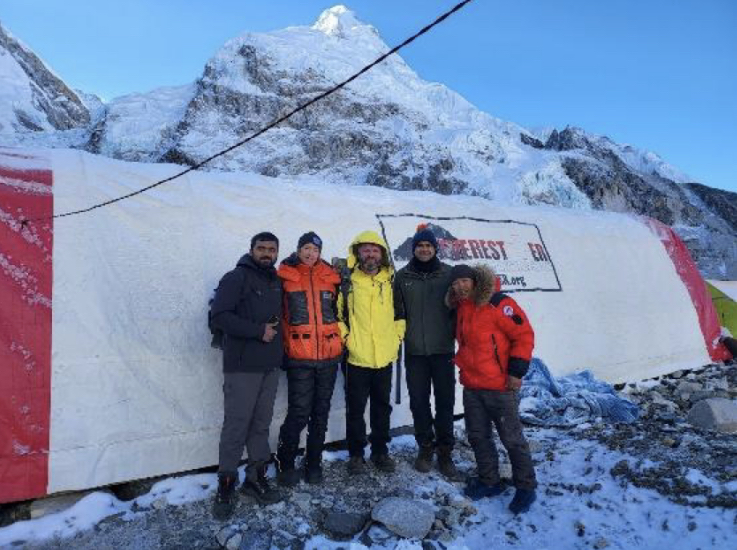Climbing Everest for Healthcare Equality
June 30, 2022

This past March, Brunswick County resident Michael Cairnie climbed to the Base Camp on Mount Everest. The Base Camp is the last stop before the summit and one of the most remote hospitals in the world. As he and his team ascended, they carried portable x-ray equipment to take x-rays of people living and working on the Mountain.
But why go through all this effort, hiking for nine days, up harsh terrain in harsher weather? In short, to prove that they could.
More specifically, to prove that diagnostic technology could be transported and used in areas as remote as Mount Everest. Isolated medical facilities often severely lack diagnostic technologies necessary for health care procedures such as x-rays, MRIs, and invasive surgeries. This issue is known as global healthcare inequity.
Michael is part of a team making efforts to bring awareness to this problem. He has delivered, installed, and performed maintenance on x-rays equipment in 51 countries, and most of these countries were isolated and severely lacking in this type of equipment.
Michael’s experience on Everest is an excellent example of the effect global healthcare inequity has on healthcare in remote areas. There are no roads or vehicles, and if someone is injured, the only way to reach treatment is to walk.
“If you’re lucky, someone might have some sort of pack animal you can ride,” Michael commented.
Even after reaching a hospital, their health isn’t guaranteed. Due to lack of equipment, doctors are occasionally forced to make a diagnosis without actually seeing the problem. This is common in places suffering the effects of global healthcare inequity.
It is the goal of Michael and his colleagues to not only bring awareness to the issue but offer their assistance in solving it.
Their stance is that “The technology is there. We just need to make that a priority.” (Cairnie).
By showing that x-rays are perfectly capable of functioning in areas as remote as Mount Everest, he has proven that technology is not the problem. The issue is that the technology needs to be implemented, and Michael’s expedition showed that this is achievable.
Why can someone in Waterville, Maine, get hip surgery and an MRI tomorrow, but someone in Pheriche, Nepal must travel 40 hours on foot to receive care?” (Cairnie).












